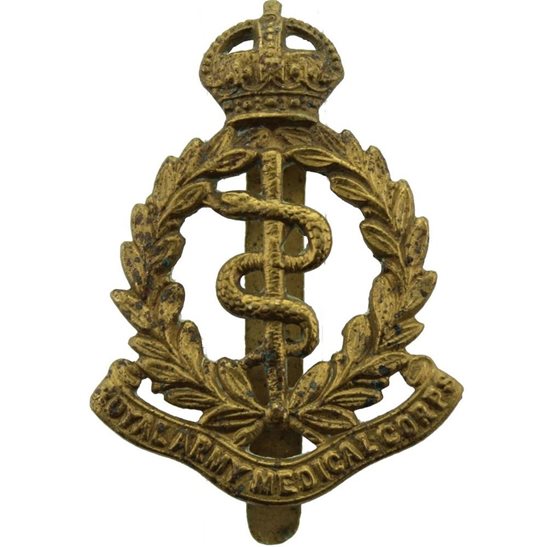Personal Details
Born: 15 February 1888 in Shifnal, Shropshire.
Family: Third of six children born to Thomas and Agnes Eaton. Married Mary Ethel Swindell at Victoria Street Congregational Church, Derby, in 1923.
Residence: At the time of the 1891 census the family were living in Oakengates, Shifnal, Shropshire. By 1899 the family had relocated to Whitchurch, and Percy was admitted to Whitchurch Grammar school at the start of the autumn term. Two years later the census records the Eaton family living at 16 Richmond Terrace, Whitchurch. The 1911 census lists the family address as Ellesmere House, Whitchurch.
Employment: In 1911 Percy was working as a clothing manager, most probably in his father’s shop ‘Eaton’s’. The 1939 register lists him as a tailor and gentleman’s outfitter. He was also a member of the Shropshire Special Constabulary at that time.
Died: Summer 1976 in Aberconwy, Gwynedd, Wales.
Military Details
Regiment: Royal Army Medical Corps
Rank: Corporal
Service Number: 1236 (528128 given on 1919 absent voters list, but nothing found under this number)
Date of Enlistment: Not known
Date of Discharge: After spring 1919
Reason for Discharge: Not known
Other Information: Percy was a corporal in the 71st Sanitary section of the Royal Army Medical Corps. A sanitary section of the Royal Army Medical Corps consisted of a lieutenant or second-lieutenant, 2 sergeants, 2 corporals, 20 privates and 1 batman. Its job was to maintain as far as possible clean water supplies, cooking facilities and billets, delousing stations and similar facilities.
Percy was awarded the Campaign Medals (British War Medal, and Victory Medal).

The British War Medal (also known as 'Squeak') was a silver or bronze medal awarded to officers and men of the British and Imperial Forces who either entered a theatre of war or entered service overseas between 5th August 1914 and 11th November 1918 inclusive. This was later extended to services in Russia, Siberia and some other areas in 1919 and 1920. Approximately 6.5 million British War Medals were issued. Approximately 6.4 million of these were the silver versions of this medal. Around 110,000 of a bronze version were issued mainly to Chinese, Maltese and Indian Labour Corps. The front (obv or obverse) of the medal depicts the head of George V. The recipient's service number, rank, name and unit was impressed on the rim.
The Allied Victory Medal (also known as 'Wilfred') was issued by each of the allies. It was decided that each of the allies should each issue their own bronze victory medal with a similar design, similar equivalent wording and identical ribbon. The British medal was designed by W. McMillan. The front depicts a winged classical figure representing victory. Approximately 5.7 million victory medals were issued. Interestingly, eligibility for this medal was more restrictive and not everyone who received the British War Medal ('Squeak') also received the Victory Medal ('Wilfred'). However, in general, all recipients of 'Wilfred' also received 'Squeak' and all recipients of The 1914 Star or The 1914/1915 Star (also known as 'Pip') also received both 'Squeak' and 'Wilfred'. The recipient's service number, rank, name and unit was impressed on the rim.

